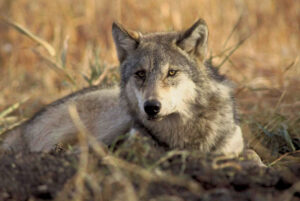
Last Saturday’s (June 17) Bozeman Daily Chronicle carried a guest column by Douglas W. Smith and our own Diane Boyd on the importance of using accurate, science-based methods in wolf management . . .
This summer offers a timely opportunity to help craft a new wolf management plan being written by Montana Fish Wildlife and Parks (MTFWP). Wolves are always controversial, and this new plan is an opportunity to reinstate scientifically-based wildlife management. We are concerned that, of late, Montana has managed wolves in a fashion that emphasizes population reductions without clear evidence or adequate justification. Montana has provided for hunter and trapper opportunity and, despite misconceptions about wolf-elk interactions, elk have maintained healthy populations across the state and are even overabundant in some game management units. Livestock depredations are very low, less than 1/10 of 1 percent of all cattle losses in 2021.
The fundamental issue is an accurate population estimate — all wildlife management decisions depend on this. Wolves are hard to count. Initially Montana estimated numbers by MTFWP staff conducting field work along with radio collaring to come up with a minimum count of wolves across the western third of the state where most wolves live. As wolf numbers grew this method became impractical, so the state switched to a method that estimates numbers based on wolf sightings by hunters with resulting data plugged into a model. This model, called an integrated Patch Occupancy Model or iPOM, uses some other information about wolves like territory size and pack size, and calculates a population estimate.
This method is well-known and respected scientifically for estimating distribution (the area occupied). It is not known to be a good abundance estimator. The rationale is that Montana wolves are thought to be well above the required minimum set by the US Fish and Wildlife Service, hence a precise estimate is not necessary. For scientifically based management of a high-profile predator, we need a better population estimate.